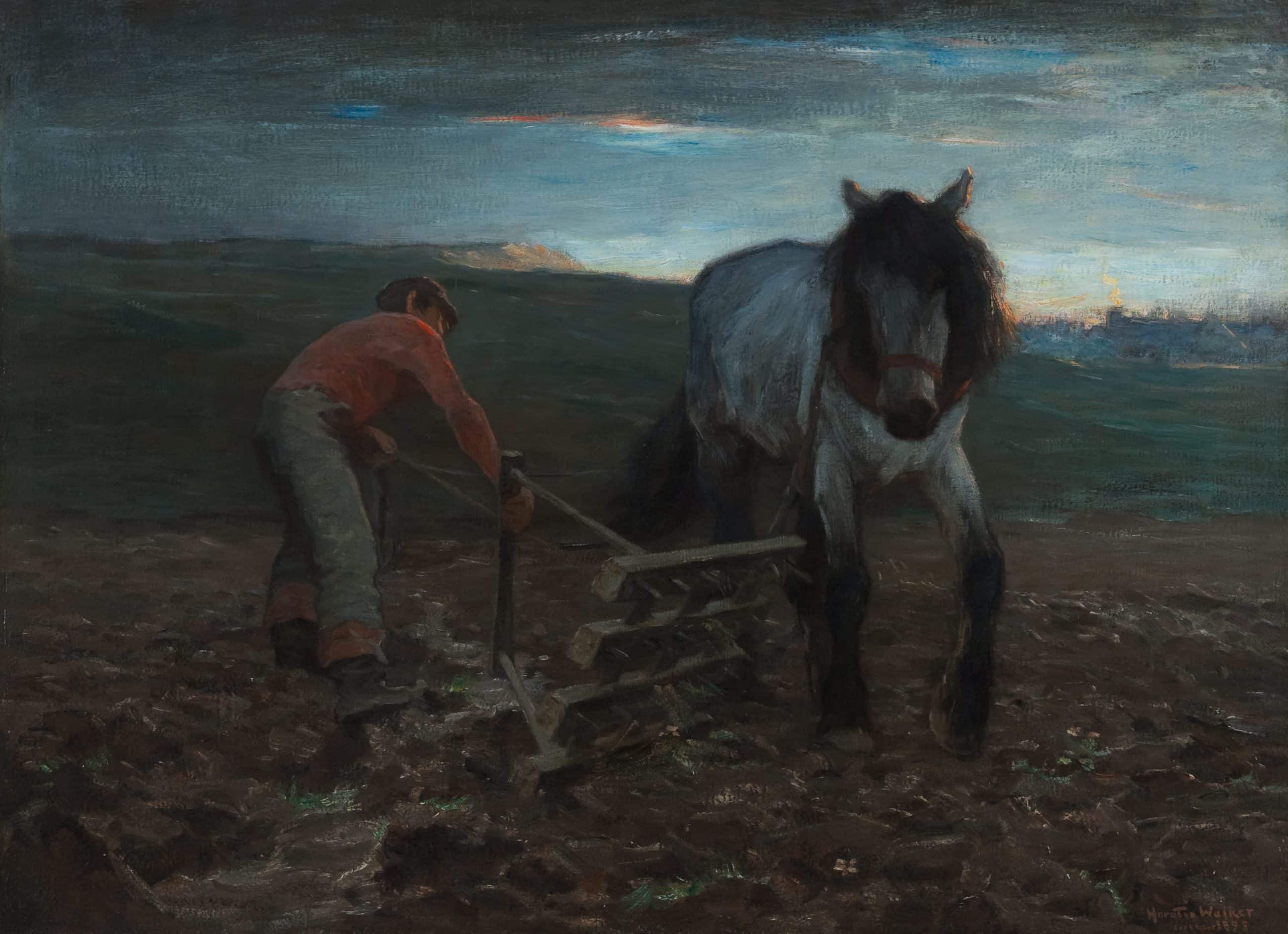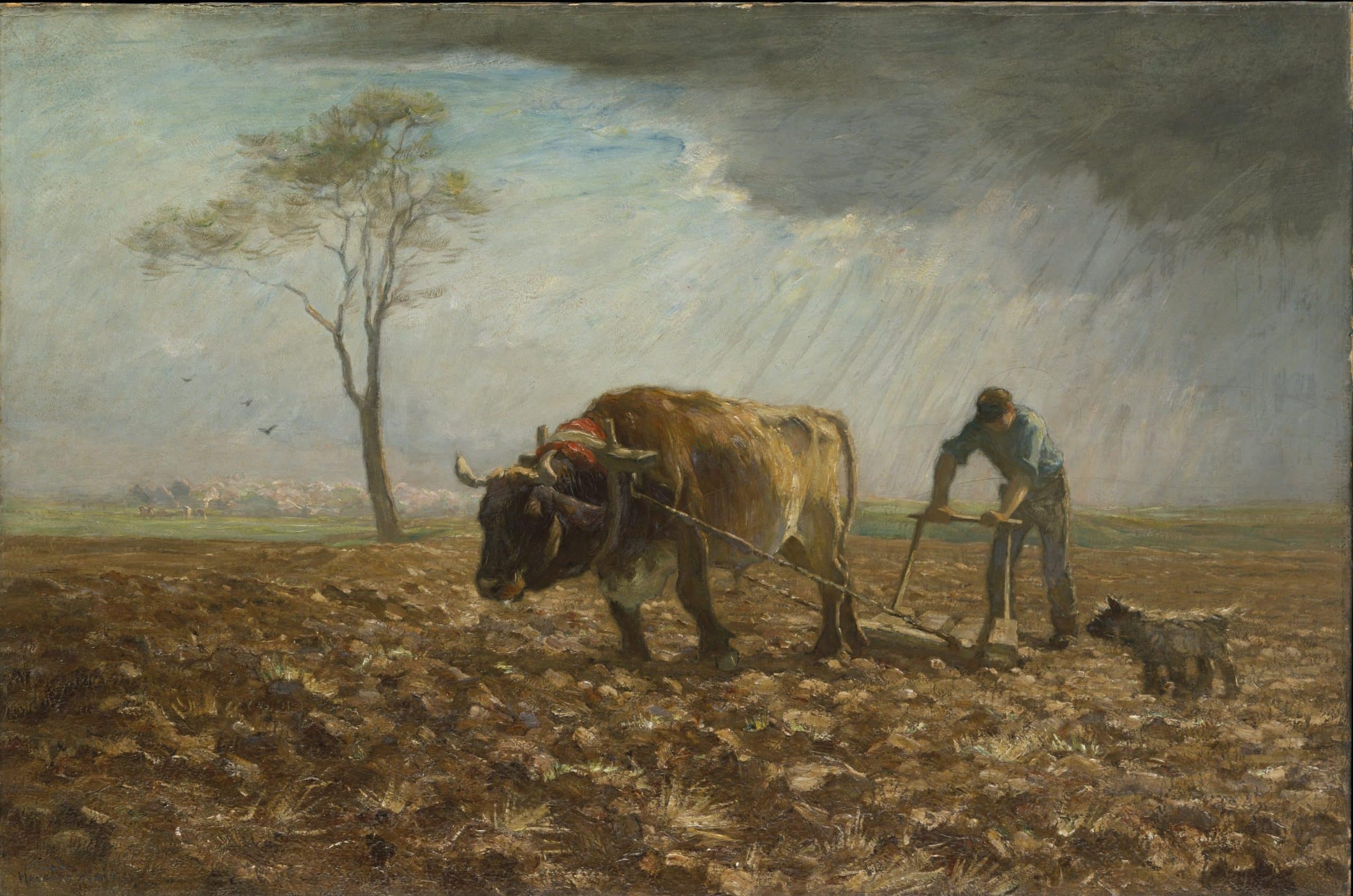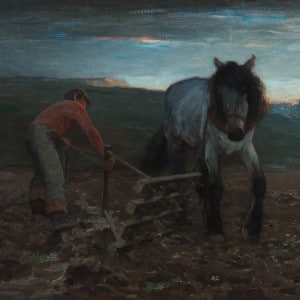

Walker frequently painted scenes around Québec City and the Île d’Orléans, and his desire to both emulate and depict the French-Canadian “habitant” served him well within an art market that favoured depictions of an idealized, bucolic past.
Turning the Harrow – Early Morning is characteristic of Walker’s style and subject matter, which focused on atmospheric pastoral scenes. A lone farmer and his horse stand in a field, labouring by the light of the newly risen sun. Like much of his work, it reveals his abiding, and often rather paternalistic, affection for the culture and landscape of rural Québec, which he first witnessed at the age of twelve after travelling to Wolfe’s Cove (presently Anse-au-Foulon) with his lumberman father. His approach to painting was deeply influenced by the Barbizon art movement, which developed in the mid-nineteenth century around an artist colony in Barbizon, France. The American Barbizon, which gained widespread popularity in the 1880s and 1890s in the United States, emulated the French movement in its more realistic depiction of nature, compared to the idealized landscapes taught by the European Academies.6Barbizon artists were in turn influenced by the seventeenth-century Dutch landscape tradition. Like Jean-François Millet, one of the founders of the Barbizon school, Walker has placed large figures centrally in the composition, silhouetted against the horizon line. The farmer is anonymous, shadowy; detail is sacrificed to free, energetic brushstrokes and a textured surface.7 Dorothy Farr, Horatio Walker, 1858-1938 (Kingston: Agnes Etherington Art Centre, Queen’s University, 1977), 28-29.


Walker frequently painted scenes around Québec City and the Île d’Orléans, and his desire to both emulate and depict the French-Canadian “habitant” served him well within an art market that favoured depictions of an idealized, bucolic past. Despite their Canadian subject matter, his canvasses were best-known in the United States, where collectors could afford their high price tags. However, by the 1920s, larger cultural shifts encouraged people to look to the future instead of the past. The popularity of Walker’s work swiftly declined as styles and approaches popular in the nineteenth century were replaced with more modern art forms. Walker’s work, which was never ground-breaking to begin with, largely faded from the minds and gallery walls of critics and collectors alike. However, his work lives on as a poetic, albeit unrealistic, love letter to Île d’Orléans and provides a window into the approach of an artist who was highly successful during the turn of the century.8There is a second, smaller version of Turning the Harrow – Early Morning in the collection of the Musée national des beaux-arts du Québec, which is quite possibly painted directly onto a photograph of the original. A reproduction of this second version appears in the 1927 book L’Île d’Orléans by Pierre-Georges Roy, and was likely completed for this purpose.
The Harrower (around 1890–1895), pictured above, Turning the Harrow – Early Morning (1895), and The Sheepfold (1890) were all purchased from the artist by George A. Hearn and given to The Metropolitan Museum of Art. While The Harrower remains in The Metropolitan Art Museum collection, both Turning the Harrow– Early Morning and The Sheepfold were deaccessioned.
